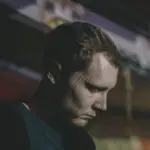Who's to say that horror should only be consumed by adults? These scary stories for kids will make you want to sleep with the light on.
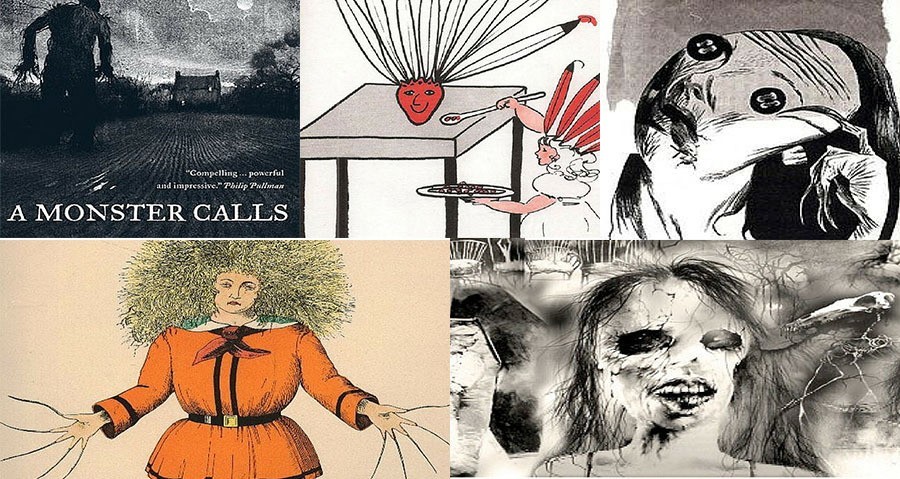
It’s no secret that some of the best-loved fairy tales come from a rather horrifying collection of folktales by the Brothers Grimm.
While many classics like Little Red Riding Hood and Cinderella were eventually toned down to be child-friendly, some authors have refused to give up their edge. Here are five children’s books with truly scary stories for kids still around today:
Struwwelpeter (1845)
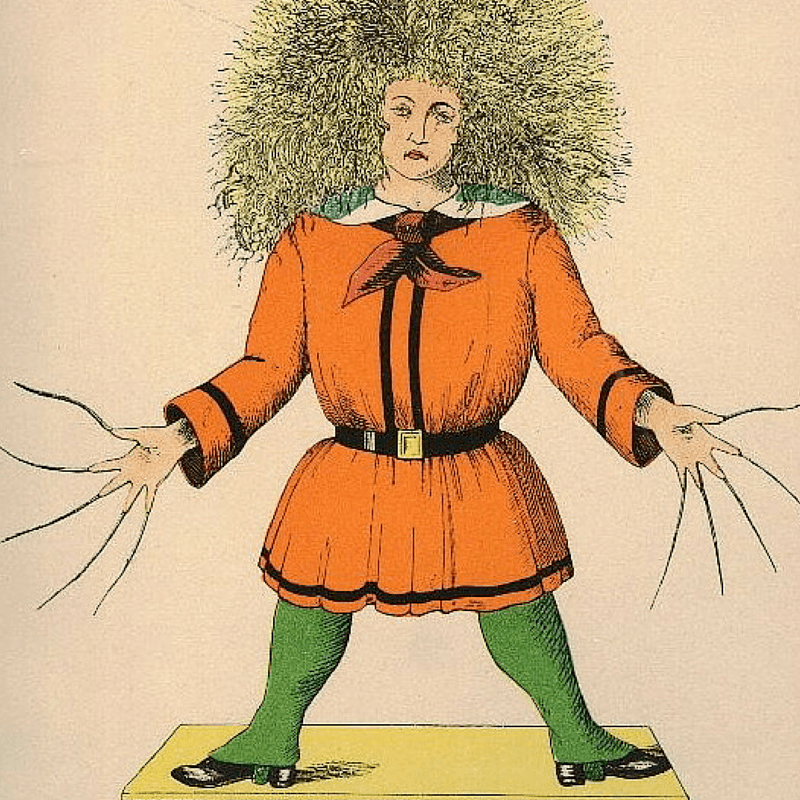
Image Source: Wikimedia Commons
An 1845 German collection of “cautionary tales” has gone down in history as one of the most terrifying children’s books to exist, mostly because of its illustrations — which depict violent acts like a person getting their fingers lobbed off (blood spray included) to a young girl who literally cries her eyes out.
The book outlines all nature of adverse fates that could befall a child who had behaved naughtily — and those consequences run the gamut from being unpopular to having your thumbs cut off by a roving tailor. One little girl plays with fire and gets more than burned:
So she was burnt, with all her clothes,
and arms, and hands, and eyes, and nose
Till she had nothing more to lose
Except her little scarlet shoes;
And nothing else but these were found
Among her ashes on the ground.
The collection of stories has been referenced in many other pieces of literature and even got a shout out on The Office.
Coraline (2002)

Neil Gaiman is known for his dark fantasies, and Coraline is certainly one of them. The wonderfully disturbing story — which was adapted into a stop-motion film in 2009 — begins innocently enough: a young girl moves to a new town and feels alone, ignored by her parents and virtually friendless. The girl, Coraline, discovers a small doorway in the house that transports her to a parallel universe — which at first seems perfect, but soon Coraline finds that not all is as it seems.
As her trips between the universes increase, things in the wonderful otherworld become increasingly creepy, until the Other Mother insists that she must sew buttons over Coraline’s eye sockets so that she can stay there forever.
Coraline is horrified and tries to escape, but the Other Mother — who turns out to be a witch who’s done this to several children before — traps her.
Things get darker from there, and with an ending that involves a giant spider, a severed hand, ghost children and a trip to an old well in the dark woods, it’s a wonder any child who read this ever slept again.
The moral of the story seems to be, be careful what you wish for, which is certainly true of children who wished for a scary story and got this.
Brave Mr. Buckingham (1935)
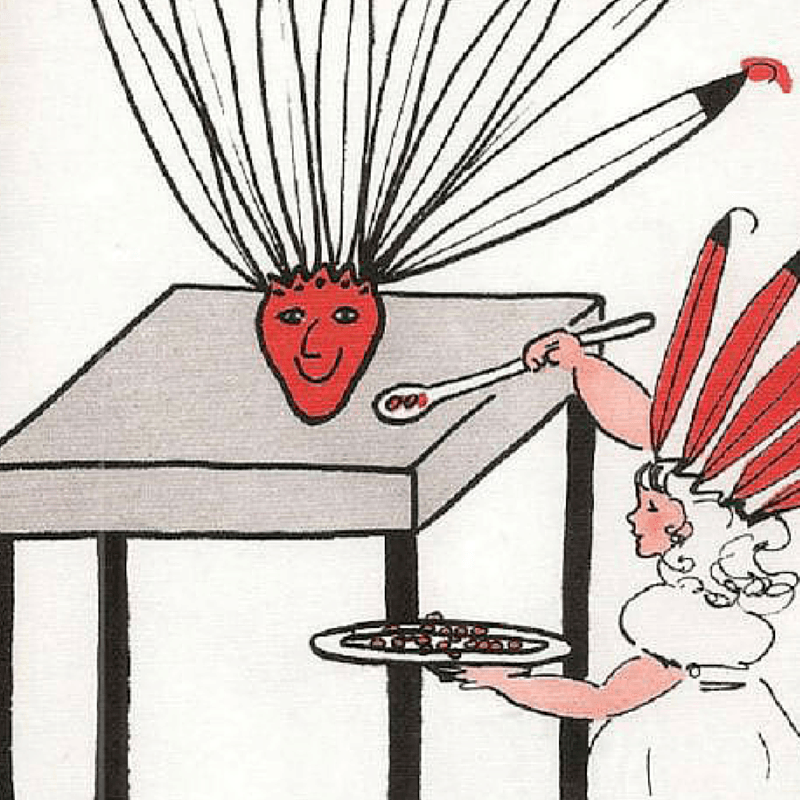
Image Source: Wikimedia Commons
Dorothy Kunhardt is best known for authoring Pat The Bunny, whose cute “touch and feel” composition is the antithesis of a horror story. However, the lauded children’s book author actually wrote one such tale of terror in 1935.
Brave Mr. Buckingham tells the story of a Native American man named Mr. Buckingham, who at first glance appears to have some serious risk-taking addiction. He likes to put his foot next to a buzzsaw because it gives him “a nice tickling feeling” and subsequently loses the foot. Later a fish eats his other foot. Then he goes on to violently lose his arms when they are sheered off by the gardener upon being struck by a passing truck.
Buckingham shrugs each time this happens, simply stating, “That didn’t hurt!”
So maybe he has congenital insensitivity to pain — or maybe he’s just living up to the masculine expectation of stoicism. It’s never made entirely clear in the book: in fact, the only thing the book does make clear is that losing one’s limbs without crying out in pain apparently makes you brave.
Eventually, Buckingham is only a head donning a traditional Native American headdress. The story (sort of?) has a happy ending, though:
“And that was the very last terrible accident that brave Mr. Buckingham ever had. After that he lived happily, happily ever after, and whenever he was hungry, his dear little granddaughter would help Mr. Buckingham to eat a big plateful of beautiful red strawberries, because strawberries were brave Mr. Buckingham’s favorite thing. And brave Mr. Buckingham was so used to saying, “That didn’t hurt,” that as soon as he had eaten the last beautiful strawberry, he smiled a very, very brave smile, and he said, ‘That didn’t hurt!'”
Scary Stories To Tell In The Dark (1981)
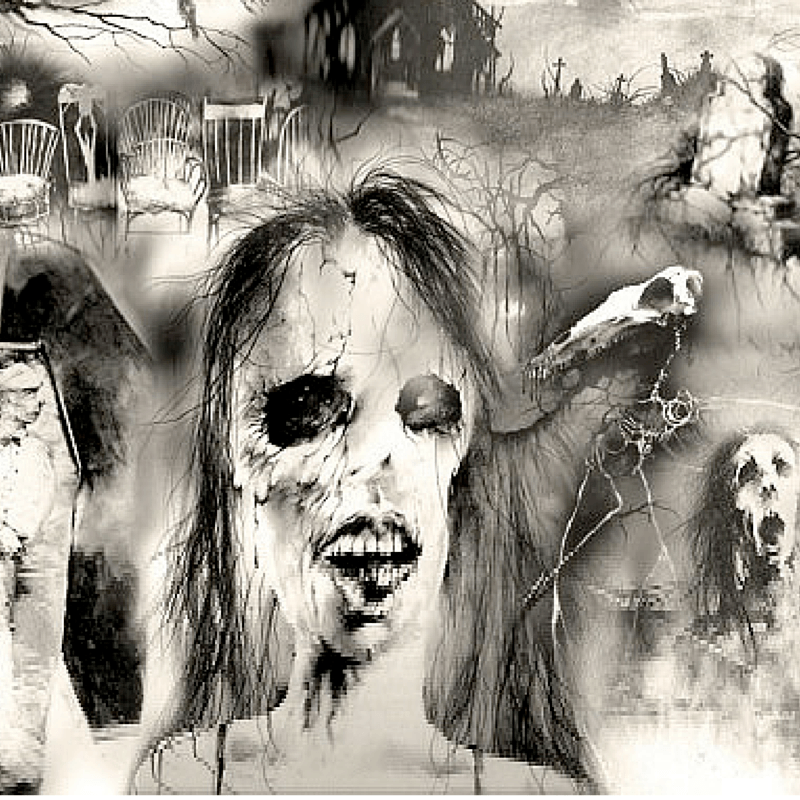
Forget Goosebumps — ’90s kids will likely remember cowering under their blankets reading these books — three of them in all — which have topped the American Library Association’s list of most challenged books over the last 20 years.
The Scary Stories to Tell in the Dark series was written by Alvin Schwartz and illustrated by Stephen Gammell, and drew heavily from folklore and urban legends. While the stories were plenty unsettling, what people most remember (and what made them so controversial) were the illustrations — horrifying black and white sketches of often oblong, wan faces with bugs crawling out of open wounds or dismembered feet falling down a chimney (presumably meaning the rest of the body was still stuck there).
The illustrations were thought unsuitable for children and the series was constantly challenged. “If these books were movies, they’d be R-rated because of the graphic violence,” schoolteacher, parent and vocal Scary Stories opponent Sandy Vanderburg said in a 1993 interview. “There’s no moral to them. The bad guys always win. And they make light of death. There’s a story called ‘Just Delicious’ about a woman who goes to a mortuary, steals another woman’s liver, and feeds it to her husband. That’s sick.”
One of the most remembered tales from the book — “High Beams” — comes from an oft-repeated urban legend about a girl driving alone on the highway at night. She notices the car behind her keeps speeding up close and flashing their high beams at her. She becomes increasingly frightened, thinking the person is coming after her for some reason. Finally, she pulls over, and the driver behind her exits the car with a gun and comes over.
But instead of going after her, he goes into the backseat of her car — where a murderer has been hiding. Eventually, the reader learns that each time the murderer sat up in the back seat to go in for the kill, the driver flashed his high beams to make the killer hide again. The urban legend itself dates back to the 1960s, and is usually linked to carjackings, where the criminal hops in the backseat of an unattended car and then takes the driver hostage.
On the 30th anniversary of the series, the books were reissued with less frightening illustrations — which caused an uproar from kids who loved the spooky originals.
A Monster Calls (2011
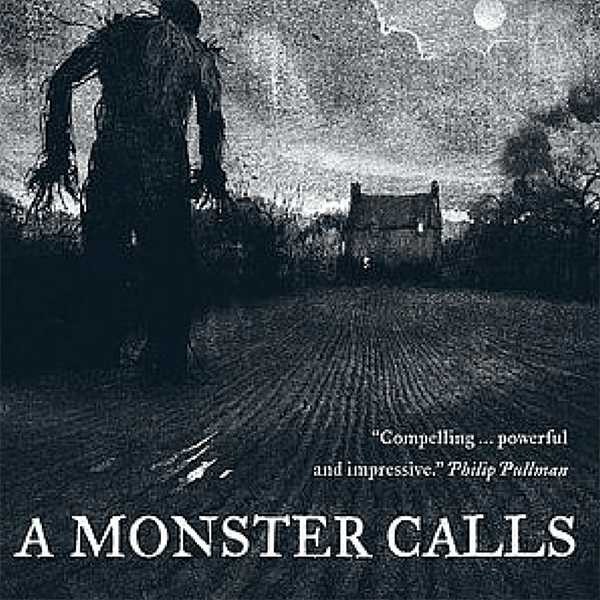
Image Source: Wikimedia Commons
Siobhan Dowd got the idea for this tale when she was diagnosed with a terminal illness. Within the pages of A Monster Calls, Dowd tells the story of 13-year-old Conor, who is trying to come to terms with his mother’s cancer diagnosis.
The boy has been having recurring bad dreams in which he is awoken by screaming winds. One night, a monster appears outside his window as a mass of sentient branches and leaves. It makes a deal with Conor: it will share with him three stories if, at the end, Conor shares his own.
The monster comes again to his window every night at 12:07 a.m. At first, the storytelling appears harmless, but it eventually leads Conor to act out — breaking things, getting into fights at school, while he is under the possession of the monster.
But once the stories have all been told, and it’s Conor’s turn to share, he confesses his fear about his mother’s death and all the ways he’s acted out while trying to come to terms with his emotions. The monster explains that this has been its purpose all along and it comforts him. Once Conor has experienced this healing, his mother dies — at 12:07 AM.
If you enjoyed this post on scary children’s books, be sure to check out the myth of Slender Man.


